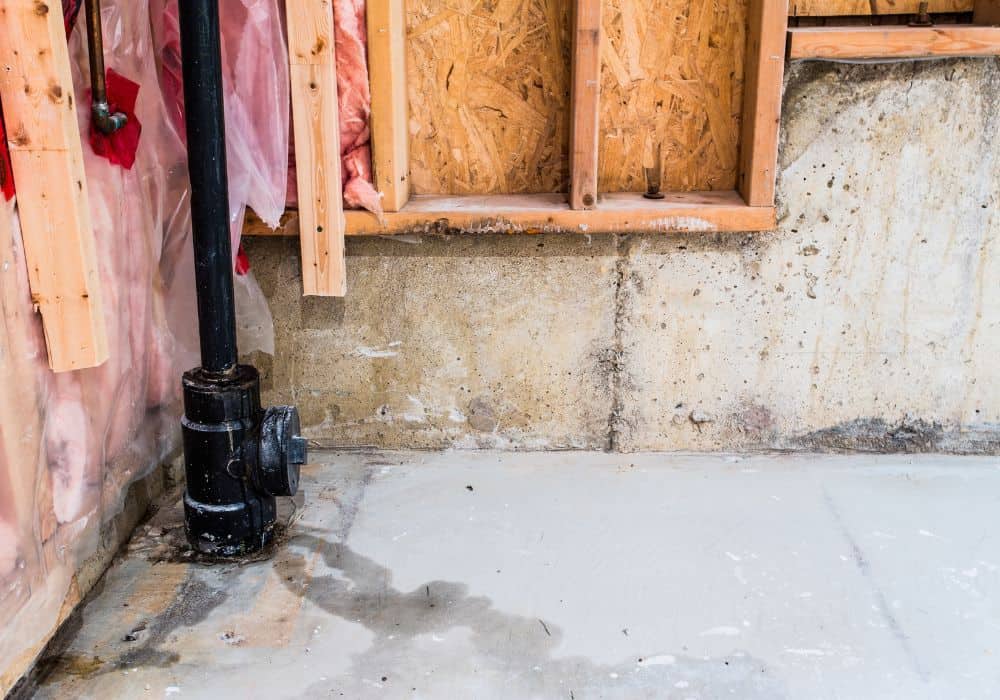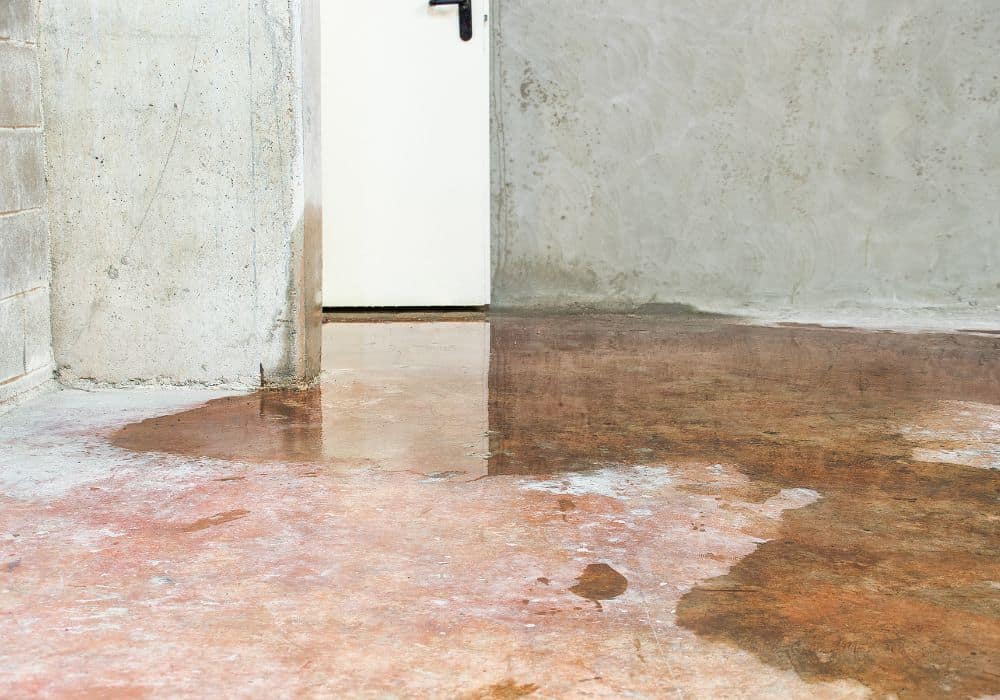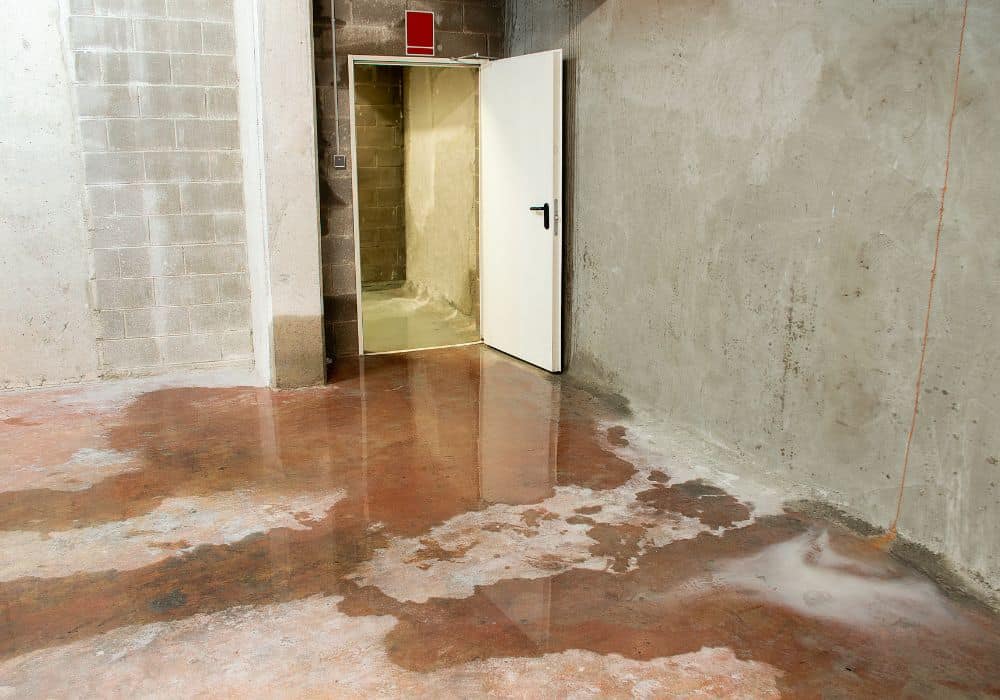A damp basement not only smells bad, but it also puts the value of your house in serious danger. Basement dampness, if unregulated, can destroy walls and flooring, promote mold growth, and even harm the roofing. Moreover, problems with water seepage can also cause the home’s architecture to fail and lead to poor indoor air quality.
So, it’s important to address water seepage issues as soon as they arise in order to stop these difficulties from getting worse. Some basement water issues can be easily fixed by simply cleaning the gutters and rerouting the gutter’s flow away from the house’s foundation. However, sometimes the problem is something else and to really get to the bottom of this issue we need to first talk about the cove joint.
Addressing The Heart of This Issue
The point where the wall meets the floor is known as the cove joint, and it is also one of the areas where most water leakage problems happen. The basement walls are built after the foundation has been laid. The basement walls are poured after the foundation footings are constructed so it is easier for them to fit into a groove and this keeps them straight. The basement floor is then really poured after the walls have had time to settle. The cove joint—a tiny space between the floor and the walls—is left as a result.
You may be wondering why the leakage happened at all. It should come as no surprise that having a gap under the floor level in a house is risky since it leaves the interior vulnerable to hydrostatic pressure from the groundwater below. Groundwater near your residence will increase after a heavy downpour or a strong storm and it starts to expand on any possible gaps in your foundation.
The cove joint offers a good entry place for water because it’s crucial to the structure of your foundation. So, it is important to know the underlying causes of the leakage so you can take the necessary steps and fix the problem effectively.
1. Lacking Proper Overall Waterproofing
There’s a high likelihood that the external basement walls of your home are not waterproofed. The brick walls of many older homes are merely covered with a layer of tar, which can deteriorate over time, leaving the walls exposed to wear and tear. If you don’t have waterproofing on the front or within your walls, water will find a way to get into your basement by using the least difficult route.
Quite obviously, the leaks usually start at the weakest spots, i.e. where there are gaps in the wall and mostly these are the spots where the footing and wall meet. If the wall in your house is a block wall, that problem arises with the tiny gaps that exist between the footing and cement filling (because no matter what, there are always some tiny gaps and these are the culprits responsible for the seepage). All these gaps (no matter how small) offer a wonderful passage for water leakage to happen.
But, let’s say you always have the outer and inner waterproofing covered for your house, would you be risk-free then? Definitely not, because water leakage still looms over your house as the water can seep under the basement floors and still damage your property. Usually, the waterproofing requirements for houses are quite lax for the footing coverage, so, there is always a risk of water passing through the wall/floor junction. Lastly, you need to double-check that the sewage system is working spotlessly because after fixing the interior exterior and floor waterproofing, you shouldn’t leave this to any chance either.
2. Lacking Appropriate Floor Drainage
As we mentioned earlier, if you really want to waterproof your basement, you need not leave anything to chance. This rule applies to the ground that’s below the basement. You must ensure that there is proper drainage and it has to be working efficiently.
Drainage requirements may vary depending on the soil type as well, so if you aren’t exactly sure of how to go about this, do not hesitate in consulting an expert on the matter. Now, if you choose to leave it unattended, you must understand that sooner or later your basement floor is going to fall victim to the damage caused by water leakage.
3. Trying to Survive Without a Pump
Even with excellent waterproofing, it will eventually stop working if there is no sump pump. The one mistake that people end up making is to consider that the sump pump is not a mandatory accessory. The sump pump actually collects the water surrounding the house (from the outside) and pumps it to a point far from the house, where it rests several feet underneath the level of your concrete foundations and retaining wall. Fortunately, if you already don’t have a sump pump, you can always set it up without digging outside of your house.
4. Having Issues With Weeping Tiles
Another possible problem area can be the weeping tiles (that’s basically a plastic water pipe but has perforations and there’s a mesh cover to keep away the debris from blocking it). This is the very pipe that’s actually circling around your house, so you cannot leave it unattended because if it is clogged, it’s going to multiply the leakage damage for you. One way to avoid this is to always keep it covered with the mesh lid and double-check that it’s not getting too worn out.
Ways to Get Rid of Basement Leakage?
So, once you have figured out the cause of the basement leak, now it is time to waterproof the cove joint. Most often people jump to the conclusion of just sealing the cove joint and thinking that they are done for the day. However, merely sealing the cove joint isn’t recommended because all it does is keep holding off the pressure (instead of dissipating it), and eventually it gives way. Luckily, there are two efficient ways of handling this issue.
1. Consider the Exterior waterproofing Solution
Generally, the exterior waterproofing methods are quite simplistic (as the name suggests) because there is a waterproof barrier that’s placed underneath the basement ground and around the house foundation. Now, this isn’t a DIY project and you will need qualified professionals to execute this efficiently. Usually, the sheets that are used for this purpose are solid sheets but some companies also use a liquid barrier that upon drying up becomes water impermeable.
Situations where exterior waterproofing is a more appropriate solution, include instances when the level of dirt has reached up to the foundation walls or when there’s honeycombed concrete used in the foundation walls. It is also a viable solution when your house has a masonry (stone or brick-based) foundation or when you’re aiming to really protect and preserve the basement by avoiding unnecessary inconveniences.
2. Opting for the Drain Tile
Nobody can argue against the efficacy of a good drainage system and it is also very cost-effective and efficient. The sole purpose of a drain tile is to divert the water flow away from your basement or area of concern. These aren’t tiles, instead, they are merely pipes used for drainage purposes.
Often the exterior drain pipes are installed while construction is still happening because it requires deep excavation near the foundation footing. While the interior one is placed near the footing on the inside of the house. Most often the problems start with the exterior drain tiles and it is nearly impossible or exceedingly costly to go about replacing or repairing those.
So, interior drain tiles are a lifesaver in this context. The interior drainage tiles function by transporting the water away from the inside of the basement before it even enters. However, even if interior drains seem like the better option, you cannot simply avoid having the exterior drain tiles because for however long they function well, it is going to be an added advantage for your house.
Conclusion
Now that you are more aware of how the leakage works and different ways to manage it before it causes substantial damage to your house, you can make your decision confidently. You can either choose to have exterior waterproofing done (which is quite expensive) or you can opt for the drain tiles to resolve this issue. Obviously, you have to lean towards an option that is both cost-efficient and would offer appropriate protection against water leakage. So, leave us a comment below and share with us which solution are you implementing.


